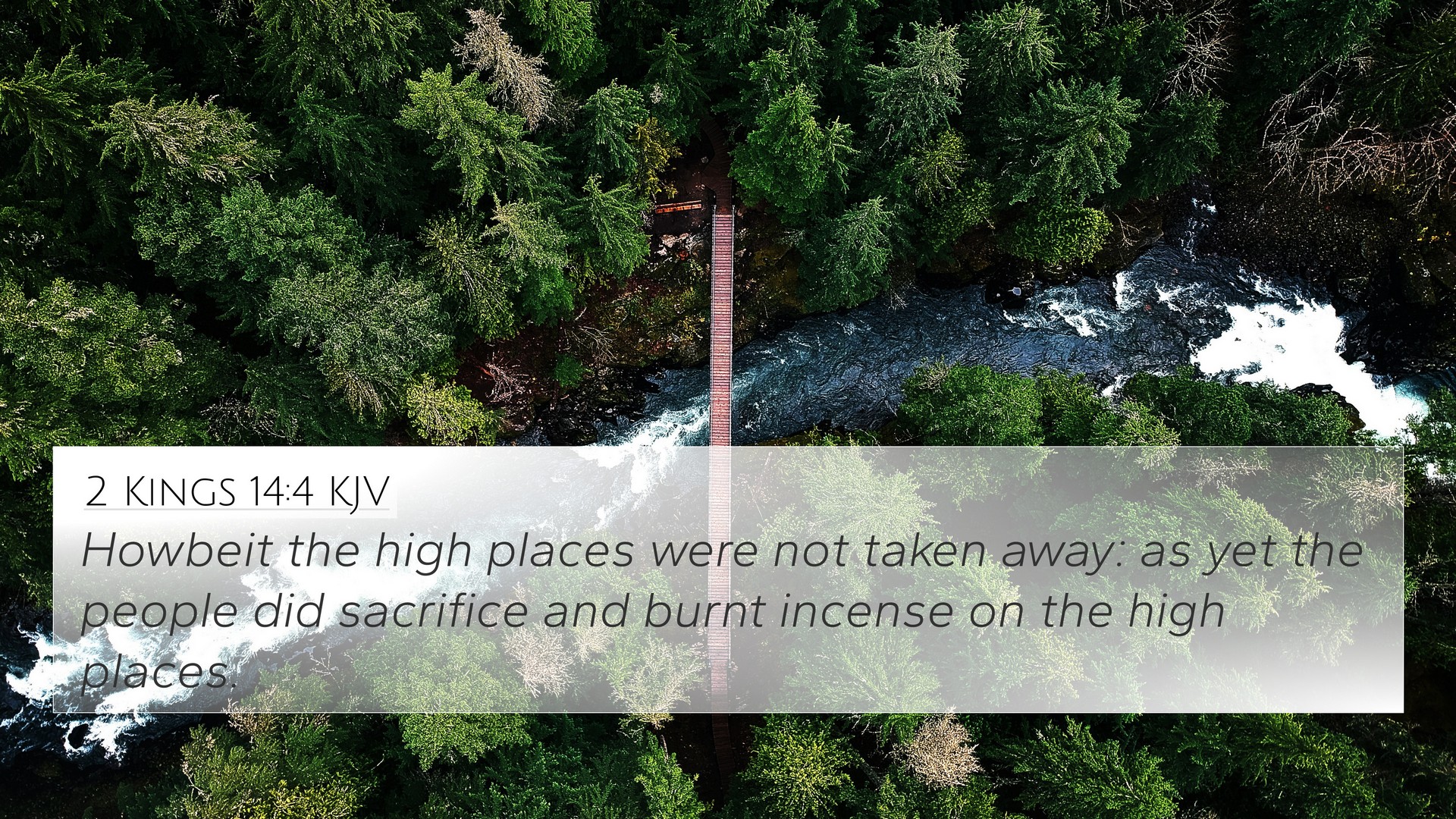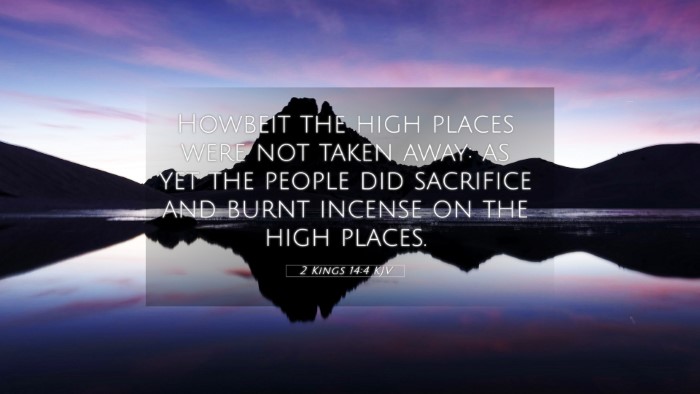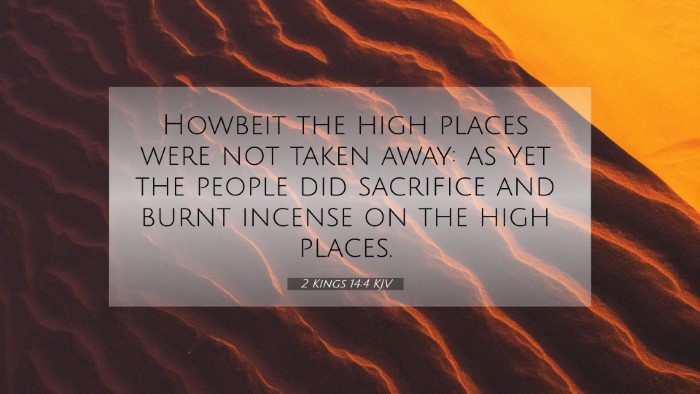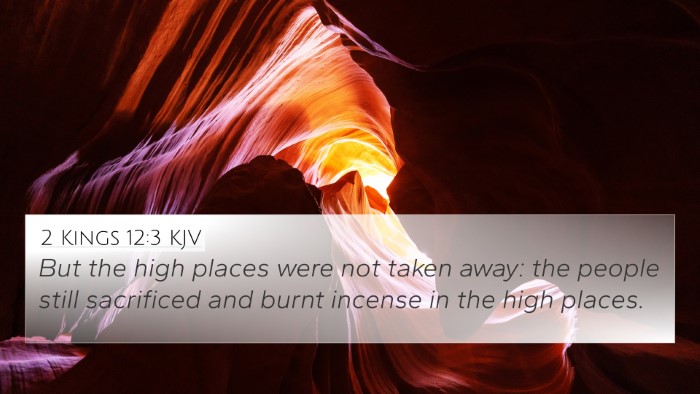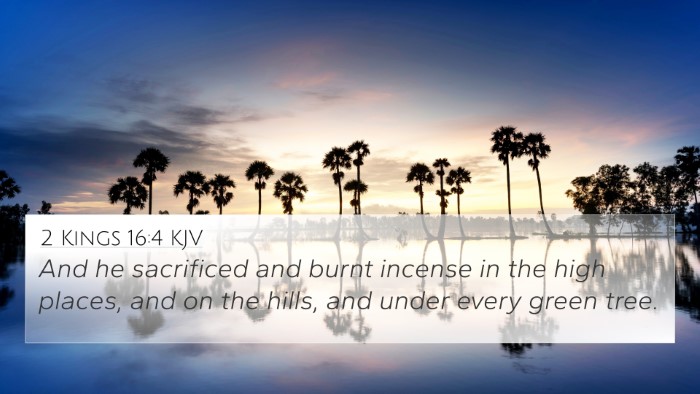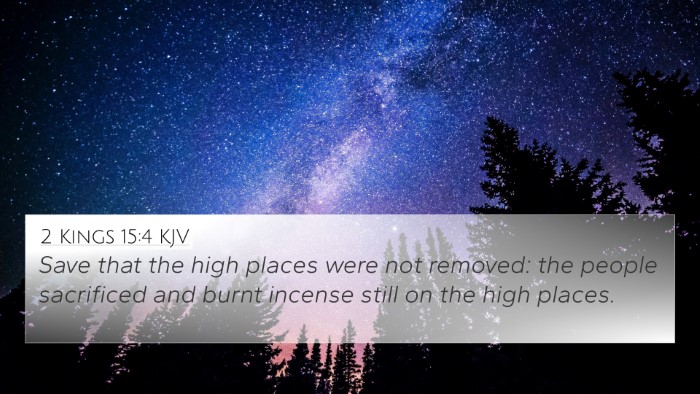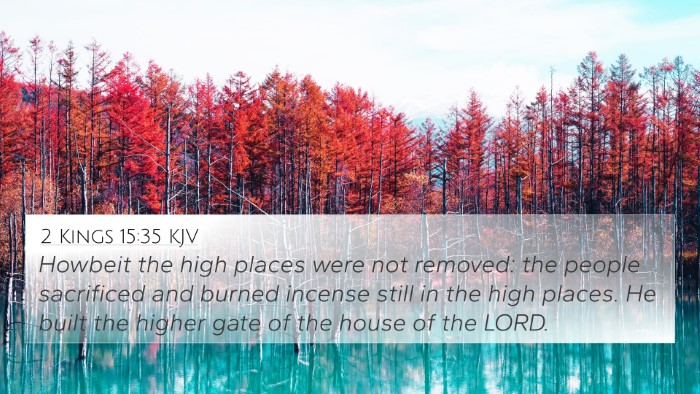Understanding 2 Kings 14:4
Verse Context: 2 Kings 14:4 states, "Yet the high places were not taken away: as yet the people did sacrifice and burnt incense on the high places." This verse provides a crucial insight into the religious practices during the reign of Amaziah, king of Judah.
Summary of Commentary Insights
The verse reflects Amaziah's partial adherence to the Law of Moses. While he did what was right in the sight of the Lord, he failed to eradicate the high places where unauthorized worship occurred. This duality highlights the struggle between true worship and idolatry.
Key Insights from Public Domain Commentaries
- Matthew Henry: Henry emphasizes that Amaziah was generally righteous; however, he did not fully obey God’s commands. The high places represent a lingering idolatry and compromise within the nation.
- Albert Barnes: Barnes notes that the retention of high places indicates a diluted faith among the Israelites. He argues it illustrates how the people continued to cling to their traditions, even when they contradicted the commandments of God.
- Adam Clarke: Clarke explains that the high places were significant in Israelite worship before the centralized worship in Jerusalem. Their continuation suggests a reluctance to fully submit to God's will.
Cross-References and Related Verses
This verse can be understood in the context of several other biblical passages that address similar themes of worship and idolatry:
- Deuteronomy 12:2-4: Discusses the command to destroy high places and worship solely in the place God chose.
- 2 Chronicles 25:2: Provides a parallel account of Amaziah's reign, emphasizing his righteousness tempered by incomplete obedience.
- 1 Kings 15:14: Reflects on Asa's reign and his removal of the high places, contrasting with Amaziah's choices.
- 2 Kings 12:3: Notes the similar case of Joash, whose reign also featured high places during his kingship.
- 1 Kings 22:43: Mentions Jehoshaphat, who did what was right in the eyes of the Lord but did not remove the high places, highlighting a recurring issue.
- Hosea 4:13-14: Discusses the consequences of worshiping in high places and the eventual judgment upon Israel.
- 2 Kings 16:4: Highlights the continued worship at high places during the reign of Ahaz, further solidifying the trend within Israel.
- Isaiah 57:7: Renews the theme of worshiping on high places, linking it to idolatry and divine discontent.
- Jeremiah 7:31: Addresses the practice of offering sacrifices in high places, condemning such actions as abominable.
- Ezekiel 20:28: References the sacrifice on high hills, aligning with the warning against improper worship.
Thematic Bible Verse Connections
This passage serves as a vital reference point for exploring the theme of incomplete obedience and the consequences of failing to adhere fully to God's commands. It invites readers to examine their own lives concerning unwarranted traditions or practices that may dilute their faith.
Conclusion: Implications for Today
2 Kings 14:4 urges believers to evaluate their worship practices and ensure they align with biblical teachings. This verse stands as a reminder and remains relevant in discussions about authentic faith in the face of cultural pressures, illustrating the importance of examining connections between Bible verses and understanding their collective teachings.
Tools for Bible Cross-Referencing
Utilizing tools for Bible cross-referencing can enrich one's understanding of scripture. Each cross-reference provides a layer of context that enhances the interpretation of individual verses. Familiarity with a Bible concordance or Bible cross-reference guide empowers believers in their study, allowing them to uncover deeper thematic connections and link Bible scriptures effectively.
Inter-Biblical Dialogue
To engage in meaningful inter-Biblical dialogue, it’s essential to explore verses that reflect similar themes and moral teachings. By understanding the connections between the Old and New Testaments, believers can cultivate a holistic view of redemption history and God’s intention for His people.
